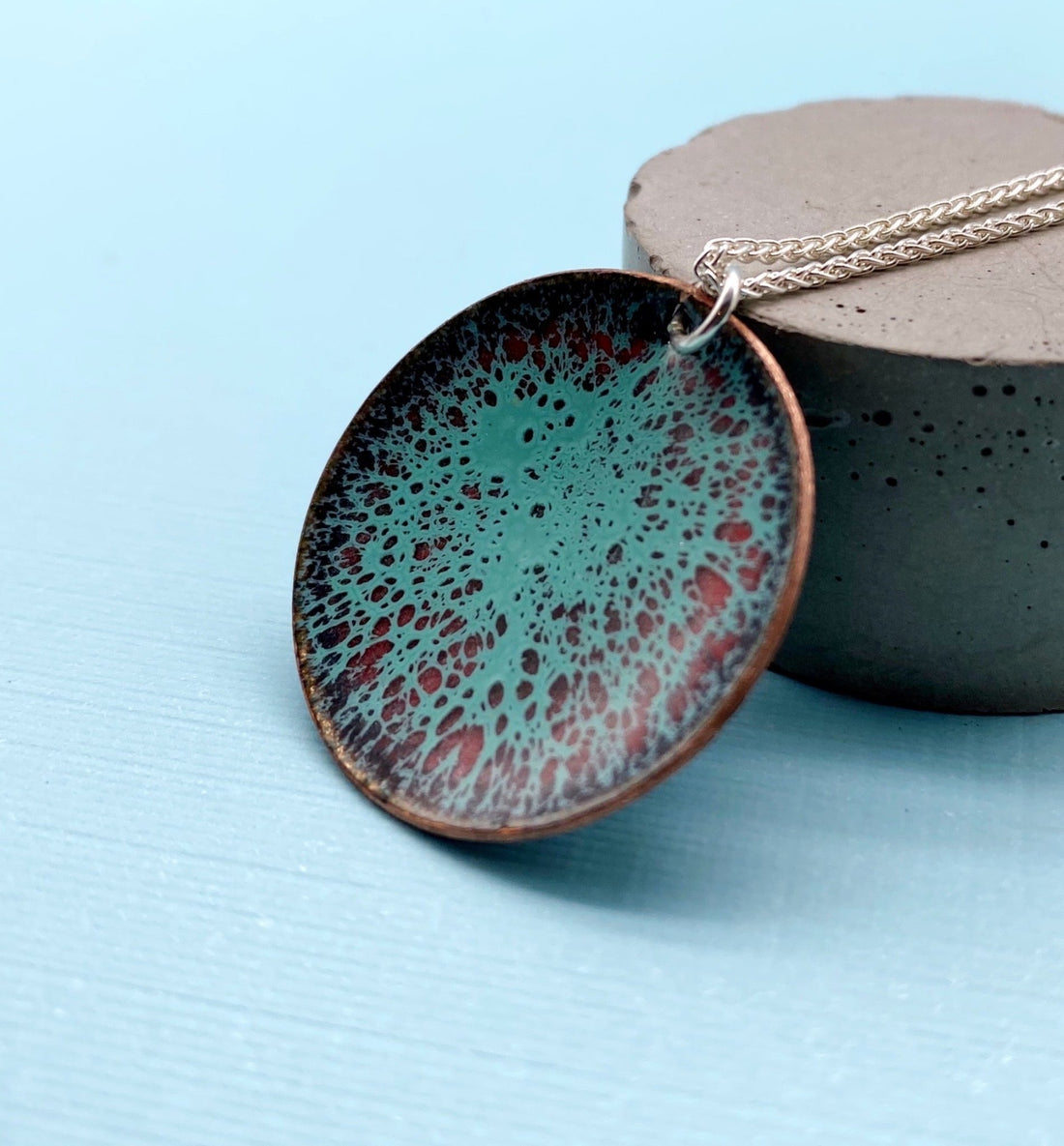
What is Enamel?
Share
Enamel is essentially powdered glass that is fused to metal using heat. This can be in a kiln or via a hand or blow torch. The most popular metals to enamel on are copper, silver and gold, although steel is becoming a more popular choice.
The powdered glass is mixed with oxides to give it colour, of which nowadays there are hundreds to choose from. It can be purchased in various forms which allows for different applications:
- as a liquid (the powder is suspended in water)
- lump form ( where it can be ground down in a pestle and mortar)
- powder (which is generally sifted or wet packed using a fine brush or a quill).
The earliest enamel technique was cloisonne, where very fine wire was used to create cells where the powder was placed and then fired. This method is believed to have originated in Cyprus as early as 1350 BC.

Another technique, Limoges was introduced in the late 15th century. This new method involved 'painting' with enamels without the use of wires to separate the colours, so they touched each other, therefore appearing more like a piece of painted art.

Basse Taille is the French meaning for "low cut. It's a where a low relief pattern is created in the metal prior to enamelling.

Camaieu is a technique where a build up of white enamel is used to create highlights and light areas. A transparent base is laid first, beneath the whites.

Champleve Enamel - the earliest known pieces date back to 400 BCE. Troughs or cells etched, formed with dies, or cast into the surface of the metal and then filled with enamel.

Plique-a-Jour dates back to the 6th Century AD. Very few pieces remain as the technique is very fragile. Enamel is loaded into the cells, but with no backing to them, giving them the appearance of stained glass. Plique-a-jour means to let in the daylight.

Once applied, enamel is fired using a kiln or torch to between 800- 830 degrees. The powdered glass turns molten and fuses to the metal, resulting in a glossy finish. They can also be heated to the point of appearing like sugar grains, just fused but not molten which can look fantastic and gives it a more modern appearance.
You can buy opaque enamels where the colour is of solid appearance as well as transparent colours where the colour allows the metal background to shine through.
I find cool transparent colours work well on sliver and the warmer colours are beautiful on gold.Most opaques work well on all metals but it is advisable to test each colour first.
I hope you have enjoyed reading this article and can understand my love of this wonderful craft. If you would like to see some of my work, then visit my website www.maisyplum.co.uk . You can also sign up to my newsletter for updates on products, sales and all things jewellery.
Best Wishes,
Jo
